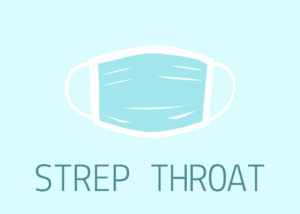Strep Throat
We made it through flu season (fingers crossed), but what about the dreaded strep? Read on for advice from Dr. Jessica Long on how to handle this often painful infection.

Now that flu is leaving the D.C. area, it seems like strep throat has happily filled the void. If you have a school-aged child, chances are you have had at least one experience with strep throat. It’s almost a parenting rite of passage to get the “There is strep in the classroom” letter home from the teacher! Even though you hear about it all the time, what exactly is strep throat and why are pediatricians so quick to treat it with antibiotics?
Strep, short for streptococcus, comes in different forms but Group A Strep (aka streptococcus pyogenes or GAS for short) is the one that tends to infect the tonsils. The tonsils are a pair of soft tissue masses that are in the back of the throat. When they get infected, by either a virus or a bacteria, they can get larger, red, painful and sometimes even have pus on them. Though viruses are the main culprit of sore throats in kids, if your child continues to complain throughout the day of throat pain or has fever, belly pain, or a rash, it’s a good idea to see the pediatrician.
If your pediatrician wants to check if your child has strep throat, she will order a rapid strep test that can be done right there in the office. After a quick q-tip “tickle” of the tonsils, your doctor will have an answer in just a few minutes. The rapid strep test is good at checking to see if your child is infected but it misses a few people (it catches between 90-95% of people who have strep throat). Therefore, most physicians will also do a culture to see if strep grows from the swab over 24-48 hours. This extra test will make your pediatrician that much more confident that if the test is negative your child truly does not have strep throat.
We treat strep throat for a few reasons. First off, it makes kids feel better faster and who doesn’t want that? Also, after 24 hours of antibiotics your child is no longer contagious and can safely go back to school and activities without infecting friends and family. Plus, strep throat that goes untreated can lead to more serious infections such as an abscess of the tonsils, kidney problems, and even rheumatic heart disease. That’s why it’s important to take the full course of antibiotics if they are prescribed even though your child will feel back to normal in just a few days.
The biggest question on every parent’s mind is how to prevent this in the future? Unfortunately, that can be tough since strep throat can be spread a few days before a child has any symptoms. Throat infections are passed through the air by sneezing, coughing, or touching someone who has it, so remind your child to be vigilant about hand washing, to cough or sneeze into her elbow (not her hands!), not to share drinks and food, and to stay home from school when she doesn’t feel well.


